BEEGroup
Building Energy and Environment
Innovation Unit of CIMNE









- BEEGroup is an innovation unit of the International Center for Numerical Methods in Engineering (CIMNE) involving over 25 researchers.
-
It was founded in 2001 and has two main offices, one in the GAIA building of the UPC Campus in Terrassa and the other one in the Agrobiotech Park in Lleida.
About
Building Energy and Environment - BEE Group
Data driven intelligence


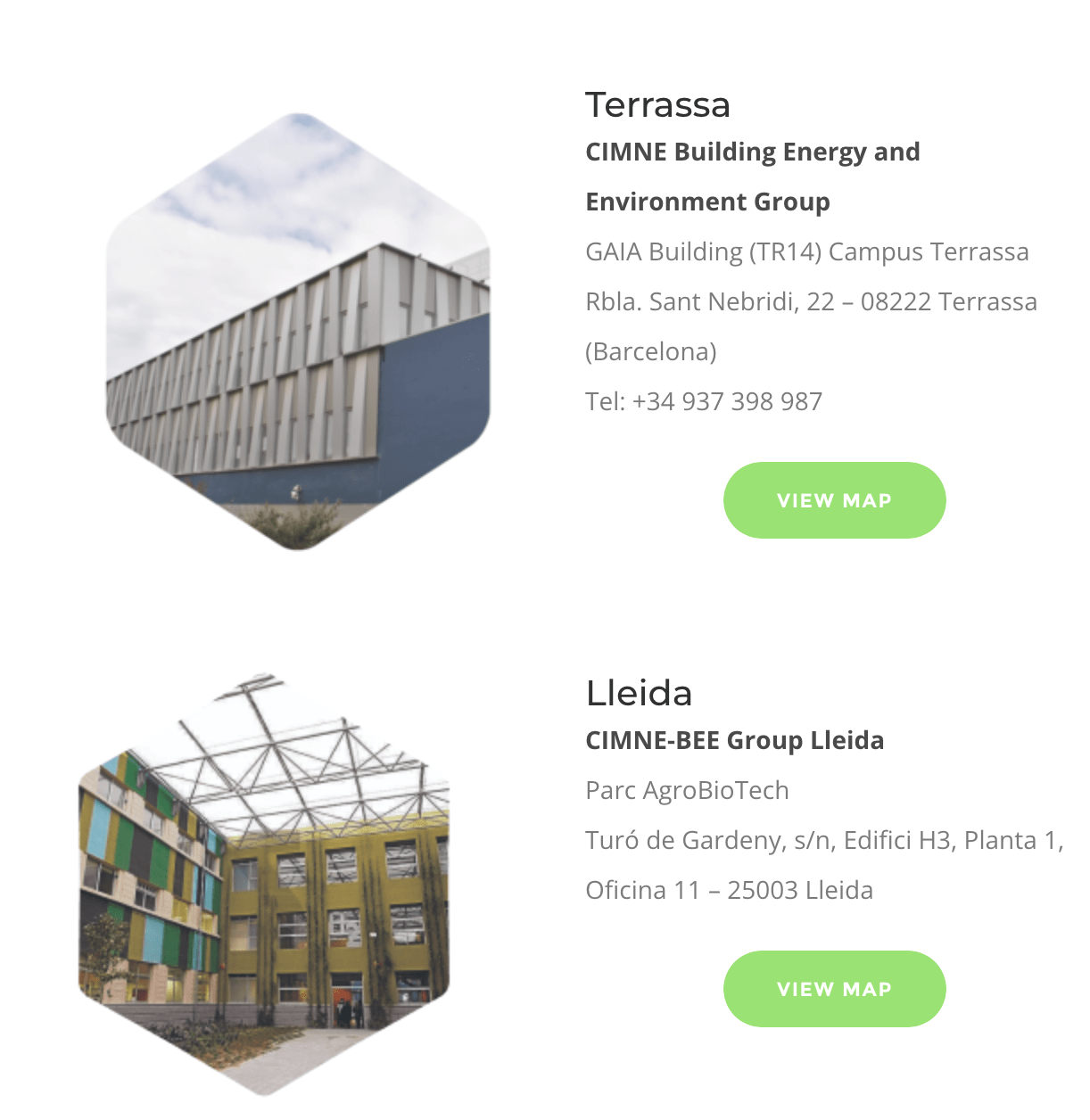
BEE Group leads innovative solutions for decarbonizing buildings and enhancing the climate resilience of cities through AI-powered technologies.

Team, vision & mission







At BEE Group, we develop intelligent systems for the design and management of large building portfolios and urban districts, offering agile responses to:
-
🌡️ Climate emergency adaptation
-
🏙️ Decarbonization of buildings and cities


Mission
We make energy, climate, urban, and geographic data more useful and accessible to professionals and companies by:
-
Reducing management and energy costs
-
Increasing applicability and reliability
-
Applying AI-powered analytics
-
Developing personalized energy tools, user interfaces, and mobile applications
We bring energy data closer to building users in a friendly and intuitive way, selecting the most relevant information to enable personalized control of their experience.
Climate action and digital innovation.


Vision
At BEE Group, we collaborate with:
🏛️ Public and private organizations
🧪 National and international research centers
🇪🇺 European R&D programs focused on energy, buildings, and the environment
We aim to empower institutions and professionals to lead the energy and climate transition through:
- High-impact research
- Data-driven solutions tailored to real-world needs
- Interfaces that bring meaningful energy information to everyday users
- Technology for cities and the planet.
Open-source innovation
High level professionals
— including experienced engineers, data scientists, and emerging young talents — working in:
-
🧠 Expertise in building systems, energy analytics, AI, and data engineering
-
🌍 Commitment to climate action and environmental impact
-
💡 Innovation with open-source technologies and European collaboration
-
🤝 A team culture built on diversity, gender equality, and public service
An enthusiastic, forward-thinking team dedicated to developing digital solutions for a more sustainable and resilient future.


More than 25 professionals
Team
Awarded young researchers

Maite Sellart: 𝗕𝗲𝘀𝘁 𝗣𝗮𝗽𝗲𝗿 𝗯𝘆 𝗮 𝗬𝗼𝘂𝗻𝗴 𝗥𝗲𝘀𝗲𝗮𝗿𝗰𝗵𝗲𝗿 at the hashtag #MetroLivEnv 2025

Research









Research Lines





Smarter distributed energy resources and flexibility
-
Enhance energy flexibility with predictive control and optimized storage in smart buildings and grids
Big data analytics for energy efficiency and operation in buildings
-
Developing data-driven processing and models to improve the management and decarbonization of large building portfolios


Energy transition and climate adaptation in cities & communities
- Geospatial artificial intelligence (GeoAI) to build a more resilient future for cities with accelerated spatial problem-solving






Research lines
Low-cost biodigester technology
-
Development of low-cost digesters as a widespread biogas technology for various climates.


Journals and congress publications
Academic research
papers accepted in indexed international journals in the last 5 years
Phd theses defended in the last 5 years
oral presentations in international congresses in the last 5 years
8

Master and degree thesis
PhD thesis
2

Phd theses in progress in the last 5 years

3

5

3
Master theses defended in the last 5 years
Degree theses in progress
Degree theses defended in the last 5 years

50

40


Commitment to knowledge


Research Networks & Collaborations





Networks and collaborations


Urban MOME net
Research

Spanish initiative to model, measure, and control urban environments to enhance cities energy efficiency
Collaboration: urban climate modeling and energy consumption simulations.
Opportunity: position our solutions as the digital layer for urban pilot projects.
CEEC – Catalan Energy Efficiency Cluster
Network bringing entities to drive energy efficiency. Promotes collaborative innovation in flexibility, energy communities, digitalization, and building retrofitting.
Collaboration: participation in working groups and joint transfer projects.
Opportunity: link our data and optimization solutions to industrial flexibility and efficiency pilots.

PTEC
Spanish Technological Platform for Energy Efficiency is a key network for innovation and foresight in energy efficiency. Coordinates thematic groups, reports, and national forums.
Collaboration: participation in working groups on digitalization and buildings.
Opportunity: influence policies and technological priorities in the energy sector.

Networks and collaborations


Centres Recerca CAT-Energia
Research
Framework among Catalan R&D energy centers. Coordinates metrics, simulation models, and district/city methodologies.
Collaboration: joint development of models and urban KPIs.
Opportunity: integrate our data architectures and ontologies into regional decarbonization projects.
Hub MSO-ED
National platform connecting industry and academia to apply modeling, simulation, and optimization (MSO) to real-world challenges.
Collaboration: showcase our tools as success cases in energy and building management.
Opportunity: gain visibility in the MSO ecosystem and access to math-industry transfer projects.

XRE4S – Energy for Society
Catalan network promoting technology transfer in the energy field, connecting universities, research centers, and companies.
Collaboration: participation in dissemination events and innovation projects.
Opportunity: join consortia and increase visibility of our energy technologies.
Monitor net

Excellence network (IETcc-CSIC, UPM…) focused on monitoring habitability, air quality, and energy efficiency in buildings.
Collaboration: integration of real data and KPI validation.
Opportunity: apply our orchestration and analytics platforms in monitoring campaigns.
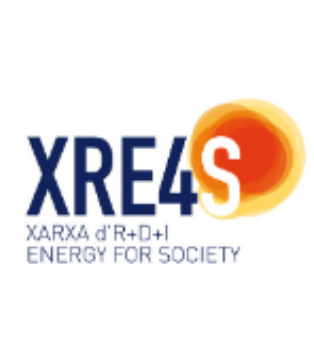

International networks


https://www.iea-ebc.org
Research
International Energy Agency collaboration on methods to assess total building energy use, including operational, embodied, and behavioural factors.
BEEGROUP represented Spain (CIMNE) developing data-driven models and evaluation frameworks for real energy performance.
Key outcomes:
-
Comparative methods for building energy assessment.
-
Statistical and simulation tools for operational analysis.
-
Basis for future European data harmonisation
GAIA-X
European Gaia-X initiative, promoting a federated, secure, and interoperable data infrastructure.
BEEGroup as member or contributor in Gaia-X Spain to shape data spaces and interoperability in built environment sectors (e.g. smart buildings, energy data).
-
Influence national data space policies and standards
-
Integrate building/energy use cases into Gaia-X ecosystems
-
Facilitate alignment between MindOpera / MindCity data models and Gaia-X frameworks
IEA EBC – Annex 53
https://www.gaiax-spain.com/

Energy in Buildings and Communities Programme



Research Projects





-
BlueBird (2024–2027) Flexibility market design and trading for smart buildings. Involves TSO/DSO coordination.
-
CELINE (2024–2027) Digital ecosystem for energy communities, with AI assistant for collective actions.
-
Climate‑Ready Barcelona (2023–2025) Climate Vulnerability Index (CVI) for 61,000+ buildings and public-facing energy advice services.
-
CLIMRES (2024–2027) Tools to assess and improve climate resilience of buildings and cities.


Vanguard Innovation
-
EKATE+ (2024–2026) Cross-border renewable energy communities (Spain–France) with digital twins and electromobility.
-
AGROPURITECH (2023–2026) Valorization of pig slurry via low-cost anaerobic digestion.
-
COSMIC (2024–2027) Large-scale pilots to demonstrate how big data and AI can optimize energy resources
-
DEDALUS (2023–2026) Participatory demand response from households to districts using AI and social sciences.








Ongoing european projects
Research



BEE Group is currently involved in 11 European research projects and coordinates 3. The most significant ones are:
- BIGG (2020–2023) Big data platform for 4,000+ buildings: semantic harmonization, KPI generation, and analytics.
- EN-TRACK (2020–2023) Centralized tracking and benchmarking of energy efficiency across Europe.
- ePLANET (2021–2024) Local government networks for energy transition planning in Catalonia, Crete, and Czechia.


- EMPOWERING (2013–2016) big data to empower electricity clients
- EKATE (2019–2022) Shared photovoltaic self-consumption for cross-border areas using IoT and blockchain.
- SIM4BLOCKS (2016–2020) Real-time demand-side management in residential blocks.
BEE Group has participated in 80 research and innovation projects (75 % EU Funded)

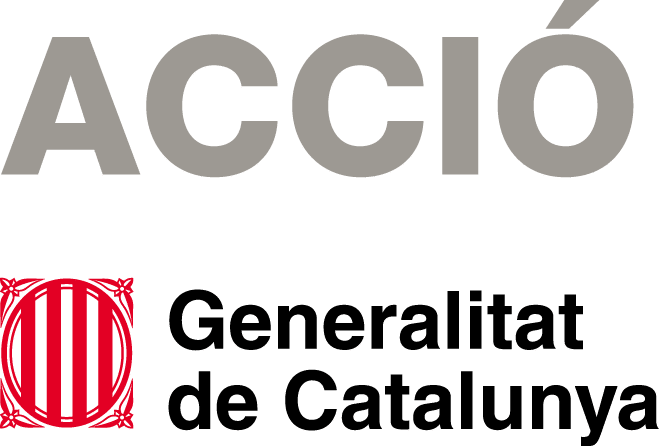

Historic projects
Research

BEE Group Technology







Innovative tools for efficient building's operation and urbant climate adaptation
BEEGroup
Technology: architecture and frameworks


BIGGR
- Orchestrates massive energy and urban data in real time.
- AI analytics + semantic harmonization for actionable insights.
- AI-powered analytics, and semantic harmonization to drive energy efficiency and actionable decisions for real-time saving
-
AI toolbox for clustering, classification, and modeling of buildings time series + metadata.
-
Native integration with the BIGG Ontology for semantic consistency.
-
Enables interoperable pipelines and data re-use across teams and companies.
AI-powered building data analytics toolbox


ENMA
open-source big data architecture developed by CIMNE
BEEGroup
Technology: architecture and frameworks



BEEGroup
Open SourceTechnology


- Standardized schema (OWL/RDF Turtle) and shared vocabulary for describing buildings and urban areas, enabling interoperability.
- Supports planning, operations, and sustainability with harmonized data and KPI framework for measurement and benchmarking.
- Optimizes energy sharing and day-ahead battery operation for PV- and battery-based communities.
- Works with diverse DERs (solar, batteries) at any scale—no limits on clients or asset distribution.
- Supports per-client tariff definitions
BIGGONTOLOGY:
Semantic reference ontology
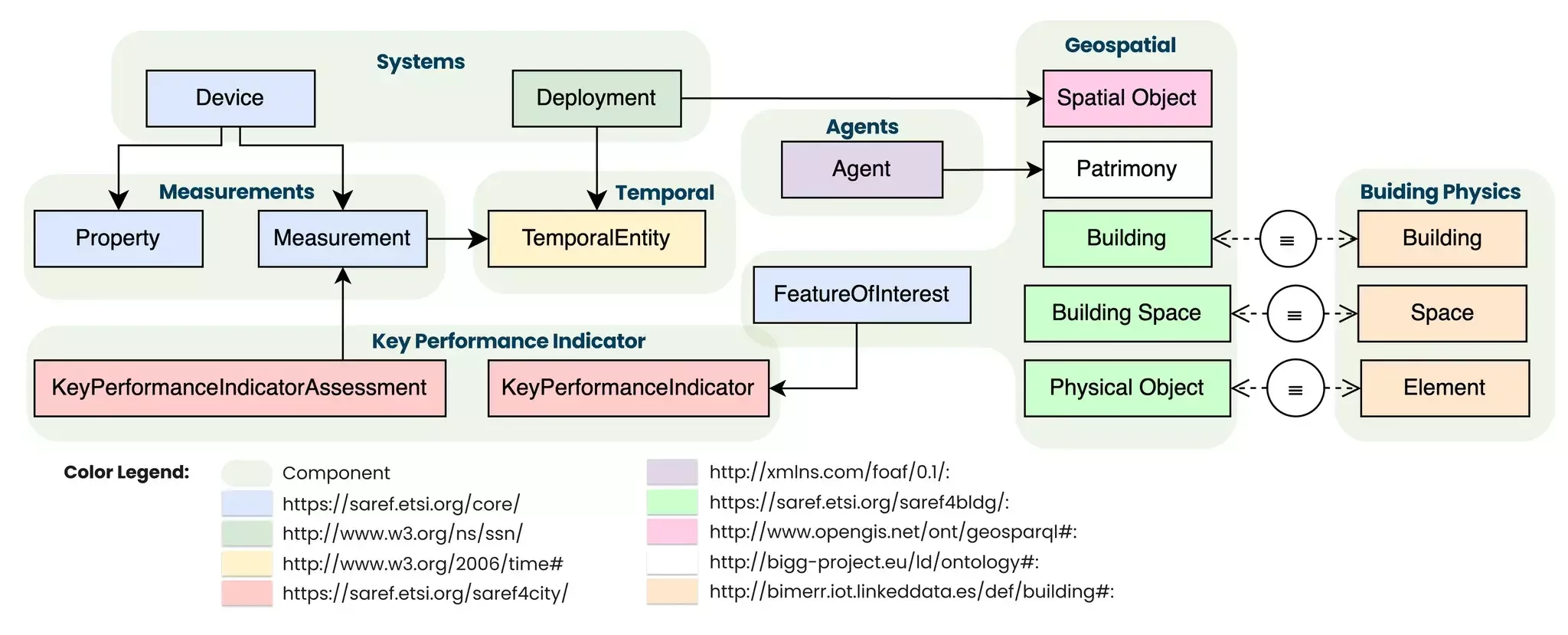

ECTOR:
Energy communities optimizer
BEEGroup


| ENMA | iKnos Energy, BlueBird, CELINE, DEDALUS |
| biggontology | CLIMRES, DestinE, Climate‑Ready Barcelona |
|
CR_BCN_ sources_implementation |
Climate‑Ready Barcelona, DestinE |
| Full bigg Stack | BIGG, EN‑TRACK, ePLANET, EKATE, SIM4BLOCKS |
social_ES:
This is a Python library to ingest, clean and transform the most updated Spanish demographics, socioeconomic and other social-related datasets from multiple potential data source entities.





Open SourceTechnology
BEEGroup


hypercadaster_ES:
- Pulls official parcel/building/address data and fuses with OSM, census tracts, postal codes, and elevation models.
- Advanced building analytics: geometry inference, floor areas, orientation, street relations, shadowing; exports for energy simulation.
- Optimized pipelines for large-scale city/province analyses


Open SourceTechnology
https://github.com/BeeGroup-cimne/hypercadaster_ES

Team, vision & mission












Ingestion
Harmonization


Big data integration

Team, vision & mission












Ingestion
Harmonization


Big data integration
Ingestion







Massive data integration
MindCity


-
Building characteristics:
-
Context of nearby buildings
-
Number of dwellings
-
Built area per use
-
Effective year of construction
-
Category / economic value
-
Typology
-
-
Energy
- Energy systems from EPCs
- Energy consumption from DSOs
- Aggregated data from DATADIS
-
Weather conditions:
- Microlocal weather file
-
Demographics and socioeconomics*:
- People per household
- Incomes (sources and annual amount)
- Age range
- Rental Housing Price Index
-
Building thermal demand
- At building level
Based on large-scale simulations and Artificial Neural Networks (ANN)
- At building level
Latest meteo updated every day at 6am
Weather upscalling resolution model
96h - horizon forecast at a resolution 100x100m
Only-trigger those creas with certain high conditions

API
post climate alerts
Read the alerts and send notifications through
the APP
Storage-Knoledge graph
Data ingestion and integration
-
IoT sensors via Modbus and BACNET protocols
-
Data from renewable generation systems (PV)
-
Satellite meteorological data
-
Real-time energy consumption
-
Maintenance data (CMMS)
-
Integration with SCADA data sources
-
Cadastral data
-
Data from official inventories

Integració massiva de dades
MindOpera: Integration of heterogenous data sets:
Data ingestion and integration


Integració massiva de dades
Work orders
Data ingestion and integration



KPIs maintenance

Integració massiva de dades
BEMS & Monitoring systems
Data ingestion and integration



Integració massiva de dades
Buildings
Data ingestion and integration




Team, vision & mission












Ingestion
Harmonization


Big data integration
Harmonization







-
IoT sensors via Modbus and BACNET protocols
-
Data from renewable generation systems (PV)
-
Satellite meteorological data
-
Real-time energy consumption
-
Maintenance data (CMMS)
-
Integration with SCADA data sources
-
Cadastral data
-
Data from official inventories

MindOpera: Data sets used
Data harmonization




The ontology at the core of our solutions
Applied semantic web technologies:
Understanding and organizing data is as important as the algorithms themselves

Massive data integration
Processes:
- Renaming
- Unit conversion
- Data cleaning
- Post processing (Ts alignment)
- Virtual meters o Kpi Calculations
-
IoT sensors via Modbus and BACNET protocols
-
Data from renewable generation systems (PV)
-
Satellite meteorological data
-
Real-time energy consumption
-
Maintenance data (CMMS)
-
Integration with SCADA data sources
-
Cadastral data
-
Data from official inventories

Integració massiva de dades
MindOpera: Data sets used
MindOpera: Data ingestion and integration




BEEMind: Data ontology
The ontology at the core of our solutions
Applied semantic web technologies:
Understanding and organizing data is as important as the algorithms themselves

Massive data integration
Processes:
- Renaming
- Unit conversion
- Data cleaning
- Post processing (Ts alignment)
- Virtual meters o Kpi Calculations


BIGG: l'ontologia de dades que enllaça des de sensors a carrers
Reuse
-
saref, s4blg, s4city, s4agri:
- buildings, devices
-
ssn:
- systems, deployments
-
geosp:
- geolocation
-
qudt:
- units
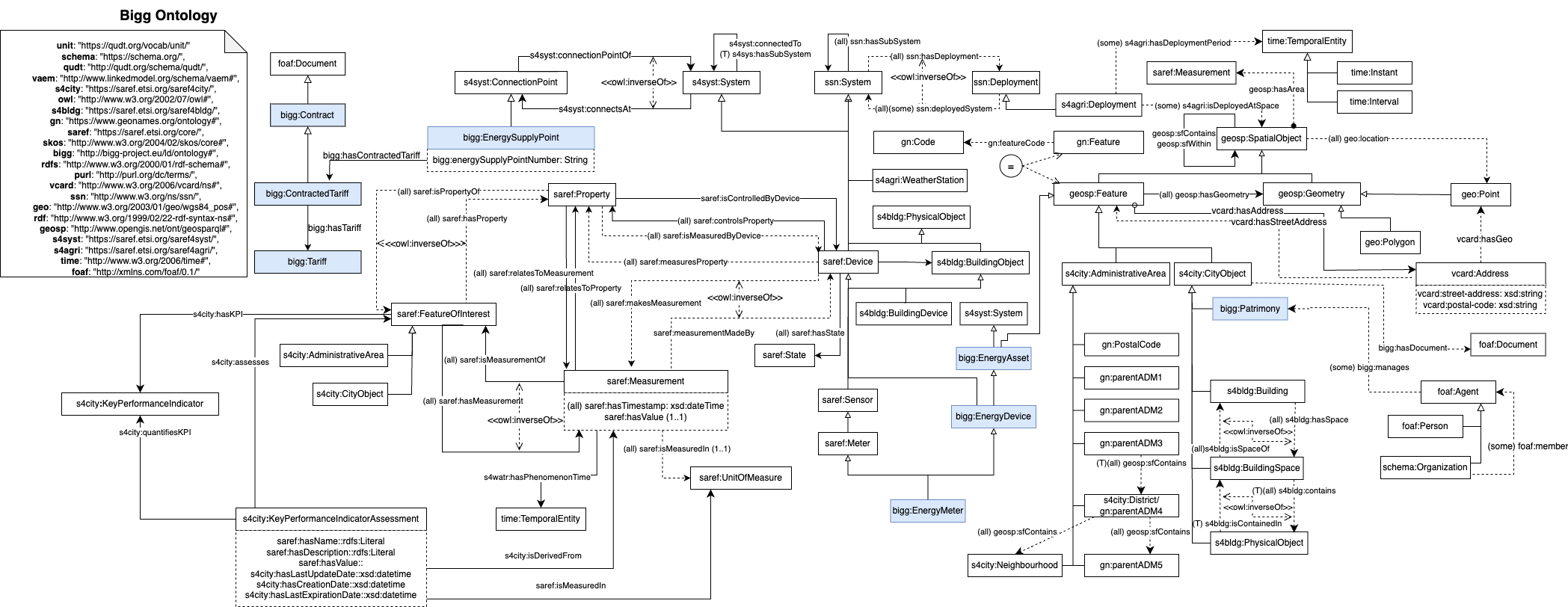
BEEMind: Data ontology
BIGG: the common data ontology
-
IoT sensors via Modbus and BACNET protocols
-
Data from renewable generation systems (PV)
-
Satellite meteorological data
-
Real-time energy consumption
-
Maintenance data (CMMS)
-
Integration with SCADA data sources
-
Cadastral data
-
Data from official inventories

Integració massiva de dades
MindOpera: Data sets used




BEEMind: Data ontology
Massive data integration
Building characteristics:
- Context of nearby buildings
- Number of housing units
- Building constructed for use
- Actual year of construction
- Category / Economic value
Energy
- Context of nearby buildings
Typology
- Energy systems from EPCs
- Energy consumption from DSOs
- Aggregated data from DATADIS

Indicadors de manteniment



BEE Group solutions: BEEMind tools





MindCity
MindOpera







BEEMind tools : MindCity
-
Integration, processing, and visualization of large amounts of urban data at the building level
-
AI-driven models to improve cities and make them more resilient against extreme weather events.
-
Figuring out specific geospatial indicators that connect to climate action and the shift towards cleaner energy.
-
Evaluation of vegetation and urban climatology scenarios
Funcionalities
Cities 4.0: Environmentally Smart
-
Facilitates strategic decision-making in the energy, climate, and urban planning fields
-
Optimizes resources and processes for large-scale city data analysis
-
Improves coordination between technical departments and citizen interaction
-
Highly scalable to any city in Europe
Beneffits
Unlocks powerful data visualization solutions for consultancies




BEEMind : MindOpera
Edificis 4.0 : Operativa global d'edificis 4.0
Modular solution for integrating operational data from public or private buildings, with the goal of improving energy efficiency, facilitating maintenance, and centralizing knowledge about their operation.
Description
Dashboard administració MindOpera







BEEMind : MindOpera
Public Administration and Institutions
- Hospitals and healthcare centers.
- Universities and educational centers.
- Cultural, sports, and administrative facilities.
Targets
- Departments of the Autonomous governments with responsibilities for assets, energy, or maintenance.
- Medium and large City Councils, especially those looking to move towards smart buildings.
- Consortiums, Provincial Councils, and supramunicipal bodies with centralized services.
Critical Infrastructure and Public Facilities

- Maintenance and energy services companies.
- Managers of business parks or industrial estates.
- Property administrators and managers of
Private Sector with Building Portfolios

Platform for resilient: buildings and cities 4.0


BEEMind
BEEMind is an AI powered environment that integrates three key pillars:
- Semantic web technologies to make data fully interoperable
- Big data architecture to manage large data volumes, and a set of intelligent tools to analyze and predict
- Optimize urban environments for energy transition and climate resilience

AI-based solutions to enhance climate resilience in buildings and urban environments
Platform for resilient: buildings and cities 4.0


BEEMind
-
Integration of heterogeneous operational data (consumption and temperature, maintenance orders, energy efficiency measures, RES generation, cadastre, BIM, and SCADA data)
-
Automatic harmonization of records from multiple sources (Modbus, Bacnet, DEXMA, etc.)
-
Generation of operational indicators (self-consumption, PR, CO₂ avoided, etc.)
-
Adaptable visualizations for each infrastructure
-
AI modules focused on predictive maintenance, control, and energy optimization
Functionalitalities BEEMind Platform
One Platform two solutions
It is structured around two tools
- MindCIty
- MindOpera



Platform for resilient: buildings and cities 4.0


BEEMind
- Local deployments and adaptations by governments, engineering firms, and ICT providers
- Implementation, support, and maintenance services based on the platform
- Development of connectors and additional modules (AI, dashboards, external APIs)
- Public-private partnerships for European calls or large-scale projects
- Marketplace of extensions and functionalities through partner ecosystems
Business Models
Sharing Commons Knowledge
The knowledge generated from the public sector is transformed into a common technological base that reduces costs, avoids external dependencies, and promotes an economic model based on collaboration and social impact.




MindCity





BEEMind tools : MindCity
Ciutats 4.0 : high resilient cities in practice
This solution helps municipalities and organizations go digital and manage their data effectively on a local level.
It is a key tool for smart cities, energy planning, adapting to climate change, and making decisions about urban retrofitting
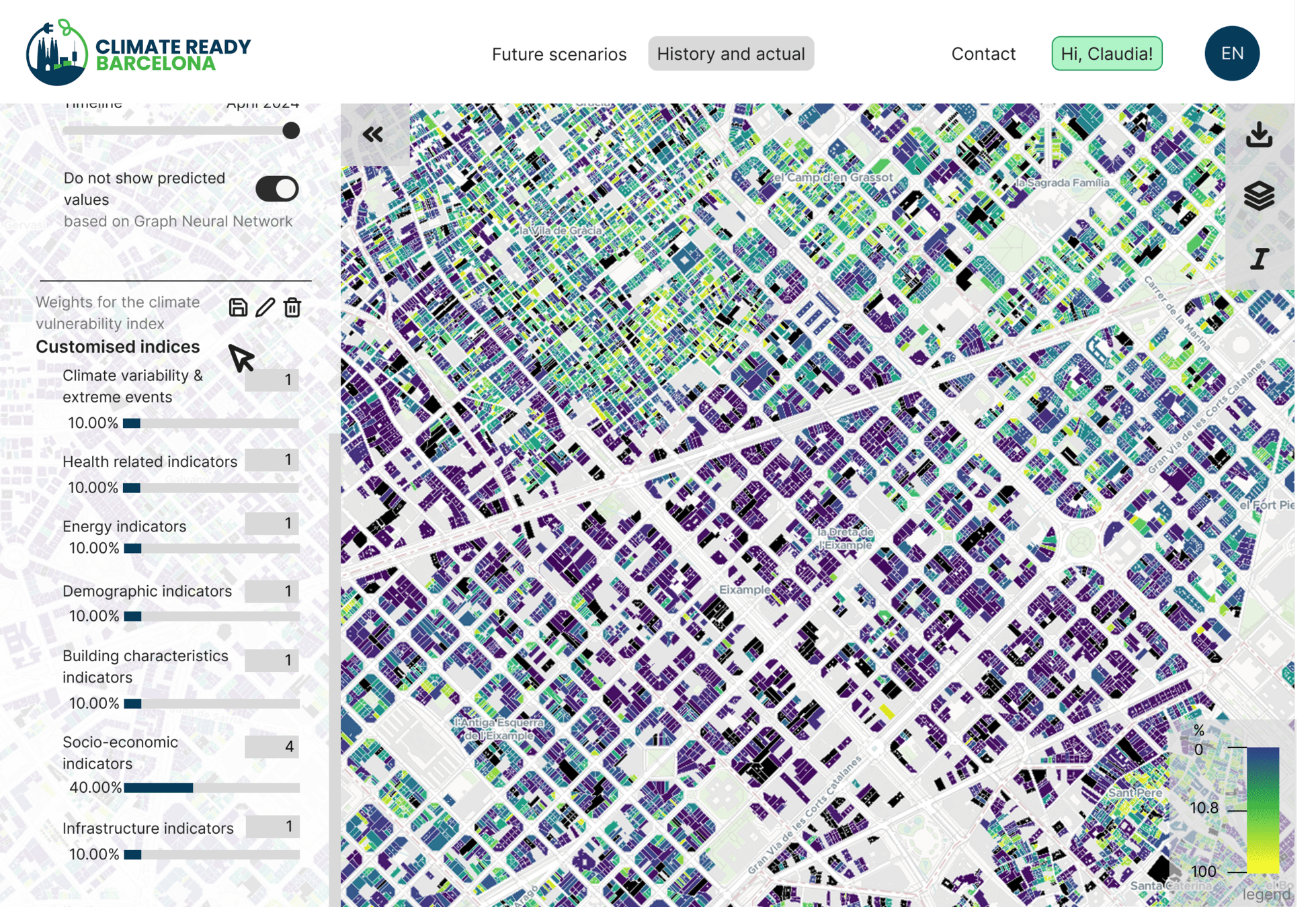
What does it do? It checks out KPIs for buildings and helps planning for energy transition and climate change adaptation:
-
City microclimate model
-
Rates how buildings are vulnerable to climate issues
-
Forecasts energy retrofitting and adaptation strategies
-
Sends heat wave communications—4 days ahead
-
Supports designing urban green spaces and shelters


Description
Data integration Across Various Scales



3. Data at building level
2. Data at census code level
1. Data at postal code level


BEEMind tools : MindCity
AI powered geo models

BEEMind tools : MindCity
We develop machine learning and Graph Convolutional Neural Network (GCNN) models
To enable microclimate assessment and learning patterns from geo-structured data (buildings, streets, use, energy, etc).
Estimation of KPIs for all buildings without data
It is a digital landscape, a dynamic knowledge graph that brings urban exploration to life.
Definition of future climate mitigation and adaptation scenarios



Data sources
MindCity: Data ingestion


Massive data integration
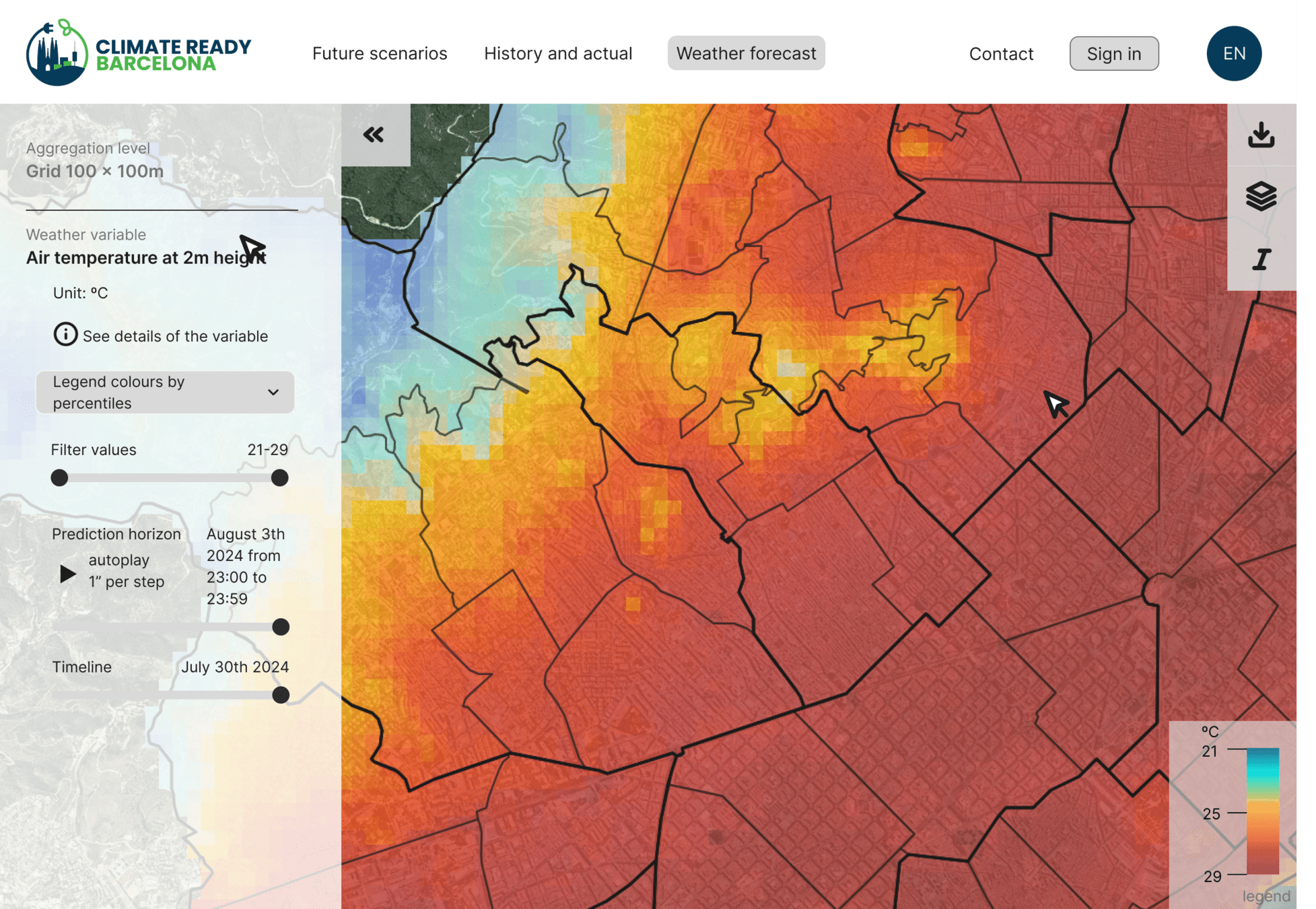
61,000
1 Milion
200.000
Buildings


Households
EPC

10,222
3 Milion
20.000
Zones (microcli-mate model)


KPIs visualized
Heat waves warnings and tips

1,050

Households
BEEMind tools : MindCity
-
Integration, processing, and visualization of large amounts of urban data at the building level
-
AI driven models to improve cities and make them more resilient against extreme weather events.
-
Figuring out specific geospatial indicators that connect to climate action and the shift towards cleaner energy.
-
Evaluation of vegetation and urban climatology scenarios
Funcionalities
Cities 4.0: Environmentally Smart
-
Facilitates strategic decision-making in the energy, climate, and urban planning fields
-
Optimizes resources and processes for large-scale city data analysis
-
Improves coordination between technical departments and citizen interaction
-
Highly scalable to any city in Europe
Beneffits
Unlocks powerful data visualization solutions for consultancies


Integrated function for large-scale analysis of the potential for photovoltaic solar installations in urban environments.
A key differentiator is the ability to provide hourly generation profiles that take into account shading effects in urban areas.
Prospecció massiva d'autoconsum fotovoltaic
-
Detection of potential rooftops using cadastral and LiDAR data
-
Detailed shadow calculation from neighboring buildings
-
Sizing of PV installations using the open-source PySAM library


BEEMind tools : MindCity
Functionalities


BEEMind tools : MindCity
Use cases
-
Optimizes resources and processes
For large-scale analysis of geo referenced urban data -
Improves coordination
Between municipal technical departments and citizen interaction -
High scalability
For any city in Spain
-
Climate vulnerability map
Detect vulnerable areas based on large number of KPIs -
Support buildings energy retrofitting
Identify and prioritize buildings with the greatest needs -
Actions to adapt to heat waves
Optimizing climate shelters, better climate communications and greening
Impacts


Cities 4.0: Environmentally Smart


MindOpera







BEEMind : MindOpera
Edificis 4.0 : Operativa global d'edificis 4.0
Modular solution for integrating operational data from public or private buildings, with the goal of improving energy efficiency, facilitating maintenance, and centralizing knowledge about their operation.
An essential tool for entities managing multiple buildings: standard data orchestration, predictive maintenance, energy efficiency...

Description
Dashboard administració MindOpera
Monitoring and predictive control
Energy optimization
Operació 4.0 d'edificis


-
Modular cloud architecture
-
Automatic aggregation and validation
-
Multi-building supervision
-
Anomaly detection
-
Predictive maintenance
-
Comprehensive equipment monitoring
-
Semantic standardization
-
Real-time intelligence


BEEMind : MindOpera


BEEMind : MindOpera
-
Integration of heterogeneous operational data (consumption and temperature, maintenance orders, energy efficiency measures, RES generation, cadastre, BIM, and SCADA data)
-
Automatic harmonization of records from multiple sources (Modbus, Bacnet, DEXMA, etc.)
-
Generation of operational indicators (self-consumption, PR, CO₂ avoided, etc.)
-
Adaptable visualizations for each infrastructure
-
AI modules focused on predictive maintenance, control, and energy optimization
Functionalitalities
Benefits
-
Orchestration and harmonization of large volumes of operational data from buildings
-
Improves overall management of equipment and commercial buildings
-
Reduces supervision time and generates smart alerts
-
High interoperability and communication with management and maintenance systems
-
Suitable for managers of public and commercial building portfolios
Buildings 4.0: Global Operation of Buildings 4.0
BEEMind tools : MindOpera
Use cases
-
Centralized management of technical systems
-
Automatic generation of KPIs and operational alerts
-
Continuous monitoring of HVAC, lighting, DHW, and ventilation systems
-
-
Early detection of anomalies in technical systems
-
Identification of inconsistencies in electricity generation/export or device behavior
-
Real-time performance analysis with interpolation and timestamp control
-
Efficient operation through reduced downtime and failure anticipation
Value
Improves service continuity and prevents penalties due to malfunctioning


Cities 4.0: Environmentally Smart
BEEMind tools : MindOpera
-
Monitoring of PV self-consumption systems
-
Data logging for inverters, statuses, temperatures, irradiance, etc.
-
Performance tracking and calculation of KPIs such as PR, CO₂ avoided, and equivalent households
-
-
Monitoring in multi-building or multi-company scenarios
-
Capacity for progressive data growth and aggregated monitoring
-
High interoperability, failure anticipation, and improved service continuity
Maximizes production and facilitates the justification of subsidies.


Cities 4.0: Environmentally Smart
Use cases
Value


BEEMind : MindOpera
Edificis 4.0 : Operativa global d'edificis 4.0
An essential tool for entities managing multiple buildings: standard data orchestration, predictive maintenance, energy efficiency...
Description

Dashboard administració MindOpera
Mind Opera is a modular solution designed for managers of public and private buildings with multiple data sources and operating systems:



harmonizes
Integrate
analyzes
Applying artificial intelligence models to optimize operations and anticipate incidents.
Consumption, maintenance, and generation data
in real time
Monitoring and predictive control
Energy optimization
Operació 4.0 d'edificis


-
Modular cloud architecture
-
Automatic aggregation and validation
-
Multi-building supervision
-
Anomaly detection
-
Predictive maintenance
-
Comprehensive equipment monitoring
-
Semantic standardization
-
Real-time intelligence


MindOpera


-
Integration of heterogeneous operational data (consumption and temperature, maintenance orders, energy efficiency measures, RES generation, cadastre, BIM, and SCADA data)
-
Automatic harmonization of records from multiple sources (Modbus, Bacnet, DEXMA, etc.)
-
Generation of operational indicators (self-consumption, PR, CO₂ avoided, etc.)
-
Adaptable visualizations for each infrastructure
-
AI modules focused on predictive maintenance, control, and energy optimization
Functionalitalities
Benefits
-
Orchestration and harmonization of large volumes of operational data from buildings
-
Improves overall management of equipment and commercial buildings
-
Reduces supervision time and generates smart alerts
-
High interoperability and communication with management and maintenance systems
-
Suitable for managers of public and commercial building portfolios
Buildings 4.0: Global Operation of Buildings 4.0
MindOpera


Cities 4.0: Environmentally Smart


Targets
Administració pública i institucions
- Departaments autonòmics amb competències en patrimoni, energia o manteniment
- Ajuntaments mitjans i grans, especialment els que volen avançar cap a edificis intel·ligents
- Consorcis, diputacions i ens supramunicipals amb serveis centralitzats
MindOpera
Infraestructures crítiques i equipaents públics
- Hospitals i centres sanitaris
- Universitats i centres educatius
- Equipaments culturals, esportius i administratius
Sector privat amb portfoli d'edificis
- Empreses de manteniment i serveis energètics
- Gestors de parcs empresarials o polígons industrials
- Administradors de finques i immobles d’oficines


Value proposition
Making easy energy efficiency operation....
MindOpera connects, organizes, and optimizes all your energy data on a single platform.
- Reduction of supervision time and human errors
- Improvement of service continuity and failure anticipation
- Optimization of energy efficiency at a portfolio scale
- Interoperable communication with existing management systems
- High scalability with the incorporation of all buildings
MindOpera





Easy


Management
Integration






Cities 4.0: Environmentally Smart


Use cases
-
Centralized management of technical systems
-
Automatic generation of KPIs and operational alerts
-
Continuous monitoring of HVAC, lighting, DHW, and ventilation systems
-
Monitoring of compliance with thresholds of the different records
-
-
Early detection of anomalies in technical systems
-
Identification of inconsistencies in electricity generation/export or device behavior
-
Real-time performance analysis with interpolation and timestamp control
-
Efficient operation through reduced downtime and failure anticipation
Value
Improves service continuity and prevents penalties due to malfunctioning
Managment costs
Connection and quick action for maintenance service
MindOpera
BEEMind tools : MindOpera
-
Monitoring in multi-building or multi-company scenarios
-
Capacity for progressive data growth and aggregated monitoring
-
Performance tracing and calculation of KPIs such as PR, CO₂ avoided.
-
-
Monitoring and control of contracts or public tenders
- New control aspects of maintenance tenders: presence, energy efficiency, system availability...
- Monitoring of indicators created for contract management


Cities 4.0: Environmentally Smart
Use cases
Value
High scalability
- Integrate assets and sites in phases (plug-and-play with BMS/SCADA/IoT), without redoing integrations each time.
Capex Protection
- Avoids premature replacements of hardware/systems.
- Maximizes production and facilitates the justification of subsidies.

Governance and licesing









Governance and licensing
Commitment to innovation
Public investment in innovation
-
Catalan
-
Spanish
-
European
Economy of scale
Return on investment
-
High initial implementation cost
-
Low maintenance cost
-
Medium- and long-term return
-
No monthly license fees
-
Collaborative software improvement
Self-sufficiency
-
Independence from big tech
-
Commitment to the local tech ecosystem
-
Transparency
License EUPL-1.1
An open public administration



Governance and licensing
License EUPL-1.1
Open-source license promoted by the European Commission, specifically designed for software developed by public administrations in Europe
-
Legal compatibility with the European framework
-
Obligation to share improvements (copyleft)
-
Promotes interoperability and reuse
A solid legal framework that promotes collaboration and continuous improvement of software in the public sector
License EUPL-1.1
Case studies: iCAT and ICAEN









The Orchestrator of Infraestructures.cat





MindOpera: Data Orchestrator
Deploy a data orchestration infrastructure for public buildings with monitoring and remote-control systems, integrating structural, operational, and energy data.
Infraestructures.cat
Integrator of all equipment data under the direct management of Infraestructures.cat:
-
Real-time data for optimal operation of hundreds of buildings
-
Data provision to diferent internal and external actors. (Energy department, Maintenace department, clients, etc)
-
Predictive maintenance, anomaly detection, consumption and generation forecasting
- Infraestructures.cat
- CIMNE-BEE Group


Actions
Goals
Main actors
Massive data integration
ENMA in action
Ingestion processes
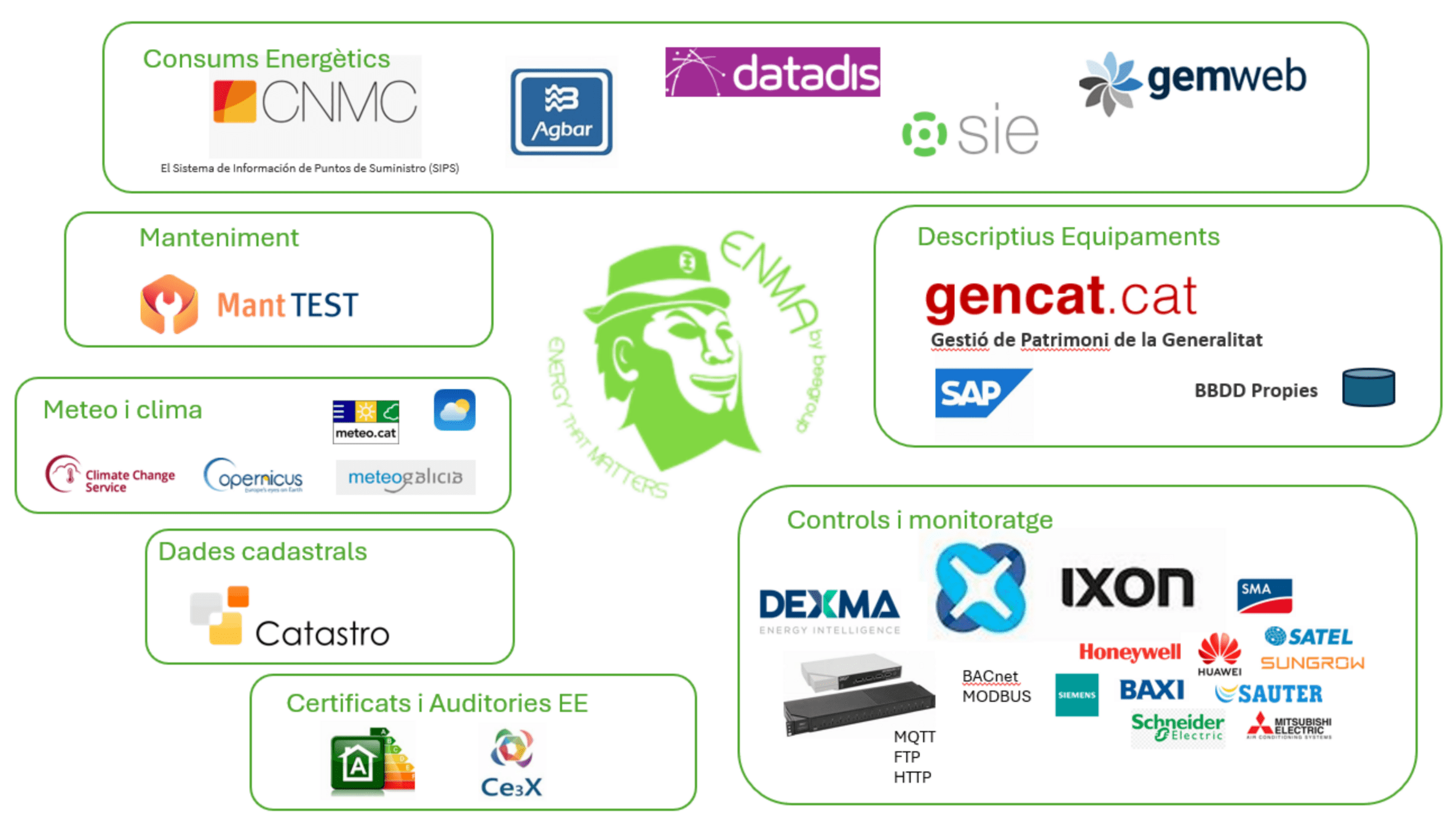
BEEMind: Data ingestion
- Executed manually or periodically
- Reading from websites, files, external databases, or APIs.
- Implemented using Python scripts.
Dades socio-econòmiques


Dades urbanes obertes





Actualització continua dels datasets
Some KPI
Infraestructures.cat
MindOpera currently supports an ecosystem of over 1,000 equipments, including:
-
1,000 with structured maintenance data,
-
Over 40,000 zones and 100,000 digital assets,
-
More than 1 million work orders processed.
-
It integrates data from over 250,000 IoT devices via protocols such as Modbus and BACnet, collecting real-time information from building control systems.



Dashboard administració
MindOpera: Data Orchestrator
MindOpera: Data Orchestrator


Infraestructures.cat
Technology used
This project uses ENMA as the basic infrastructure for BEEMind:
-
Kubernetes enables the management and scalability of deployed services, ensuring high availability and efficient application execution.
-
Apache Kafka serves as a distributed messaging platform, enabling reliable and real-time transmission of large volumes of data between the system's components.
Direct management: Data control and analysis
The main processes are organized into four distinct stages:
A. Data collection
B. Data storage
C. Static harmonization
D. Time series processing
Model intellligence
-
Predictive maintenance
-
Generation forecasting
-
Predictive self-consumption balancing
MindOpera: Data Orchestrator




Home
Admin Dashboard
MindOpera: Data Orchestrator
The tool


Monitoring: Tracking KPIs
MindOpera: Data Orchestrator
Control and Maintenance




Monitoring: Tracking KPIs



MindOpera: Data Orchestrator
Control and Maintenance


Monitoring: Tracking KPIs
MindOpera: Data Orchestrator
Control and Maintenance





SIME-ICAEN





Integrate and visualize the energy data of all Generalitat facilities (10,000) and support energy savings through data intelligence:
-
Comparison of energy indicators
-
Evaluation of the energy performance of each facility
-
Verification of savings from Energy Efficiency Measures
-
Planning of energy efficiency actions
Institut Català d'Energia
The project
MindOpera: Energy Monitoring System – SIME
Seguiment i avaluació del Pla d’Estalvi Energètic dels edificis de la Generalitat de Catalunya.
Goals
Equipment supervision
Monitoring and control of supplies
Monitoring and
control of certificates and audits
Global energy supervision
Monitoring of energy efficiency measures
Monitoring of projects and actions
Data provision to external services
Data verification from different sources
Data provision to external services


Massive comparison: Energy benchmarking

Institut Català d'Energia
MindOpera: SIME
Centralized management



Energy Analytics
Energy Efficiency Measures
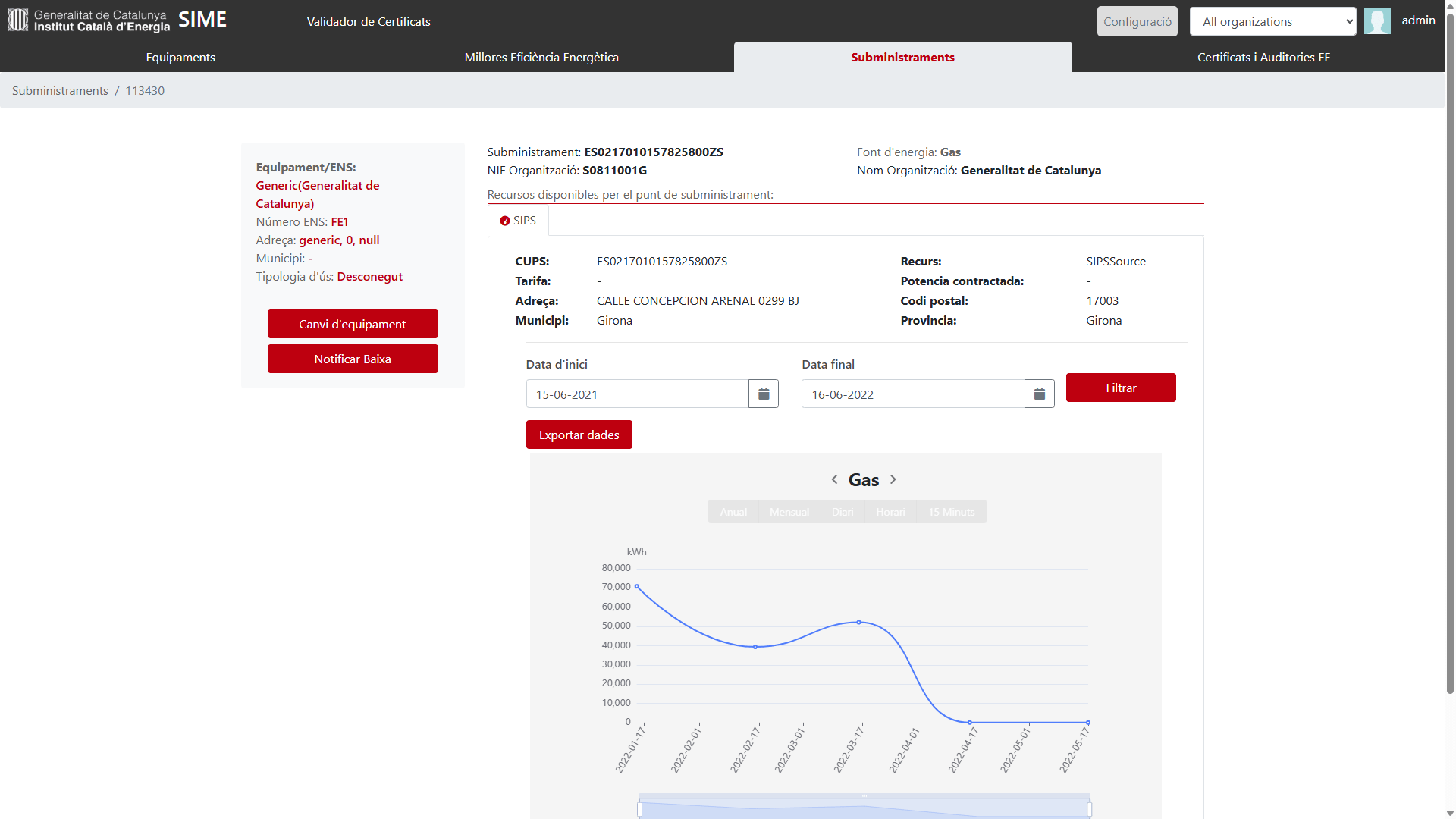
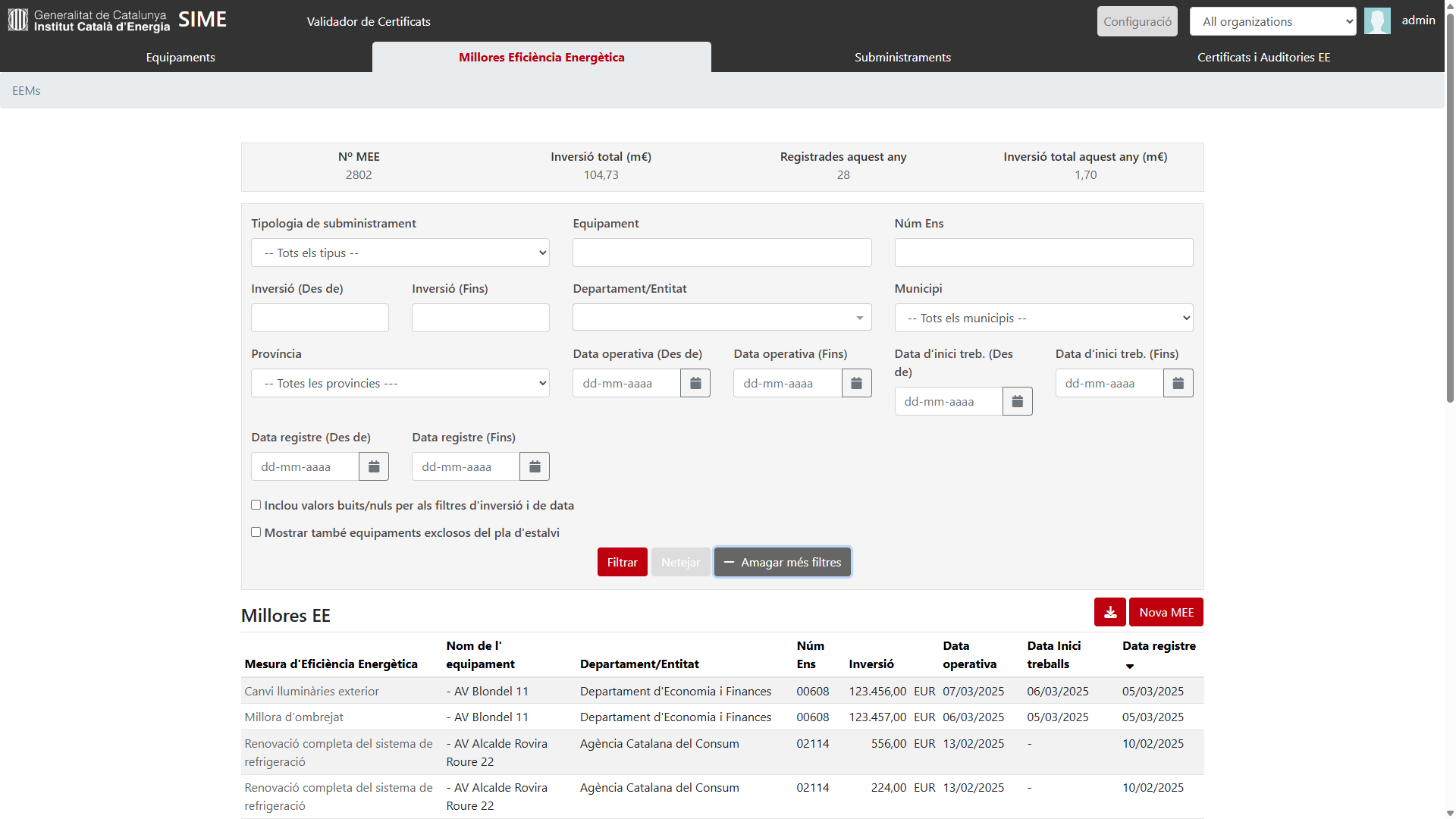


Institut Català d'Energia
MindOpera: SIME



Applied model intelligence (1)
1. Longitudinal benchmarking
What does it do?
Analyzes a building’s energy performance over time to detect trends and assess sustained changes.
Data used:
-
Time series of energy consumption
-
Historical climate data
-
Information on intervention periods (Energy Efficiency Measures – EEMs)
Objectives:
-
Compare energy performance before and after an action
-
Detect changes in energy indicators of individual buildings over time
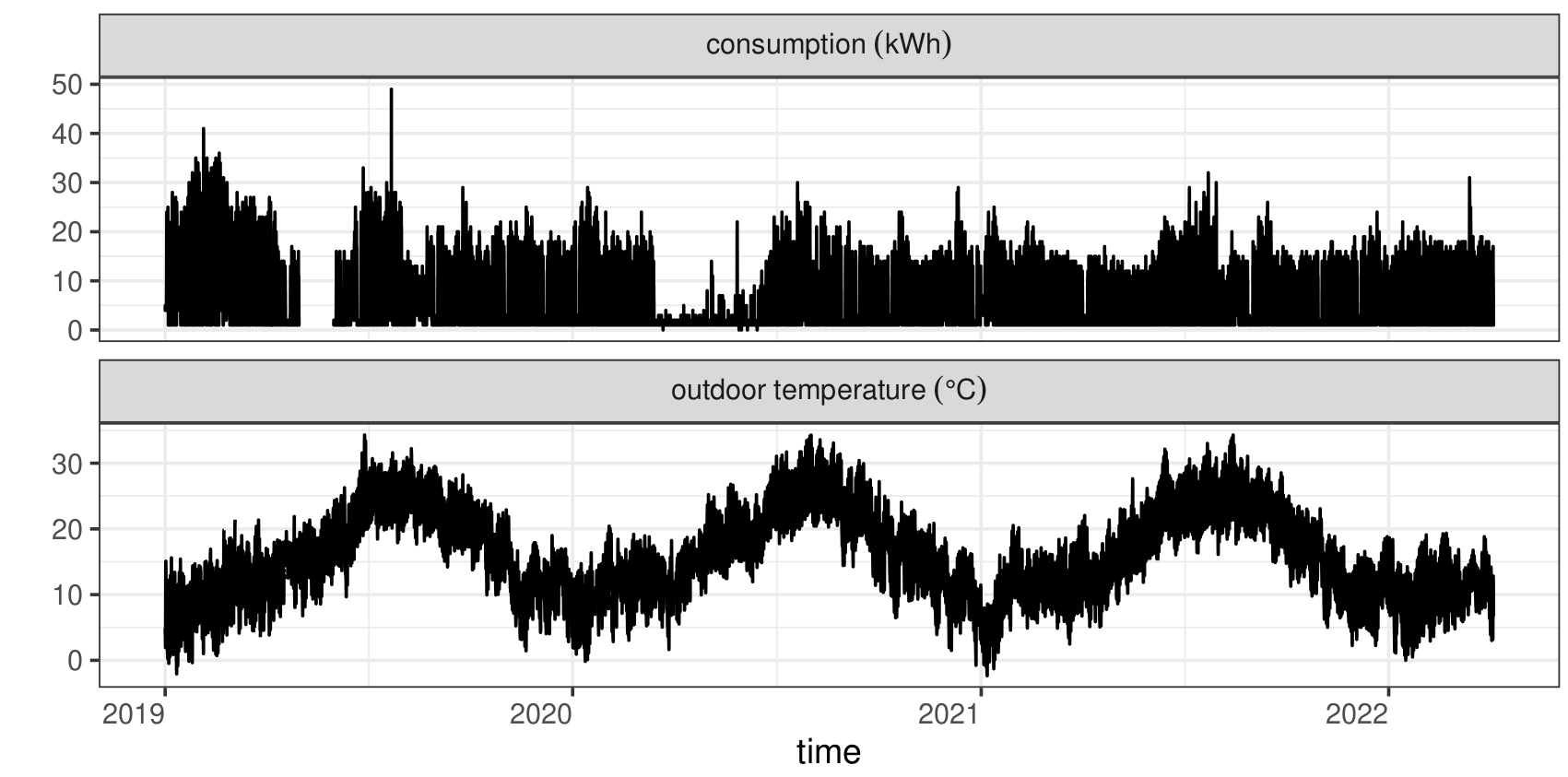
Estimation of the balance point temperature for heating and cooling periods
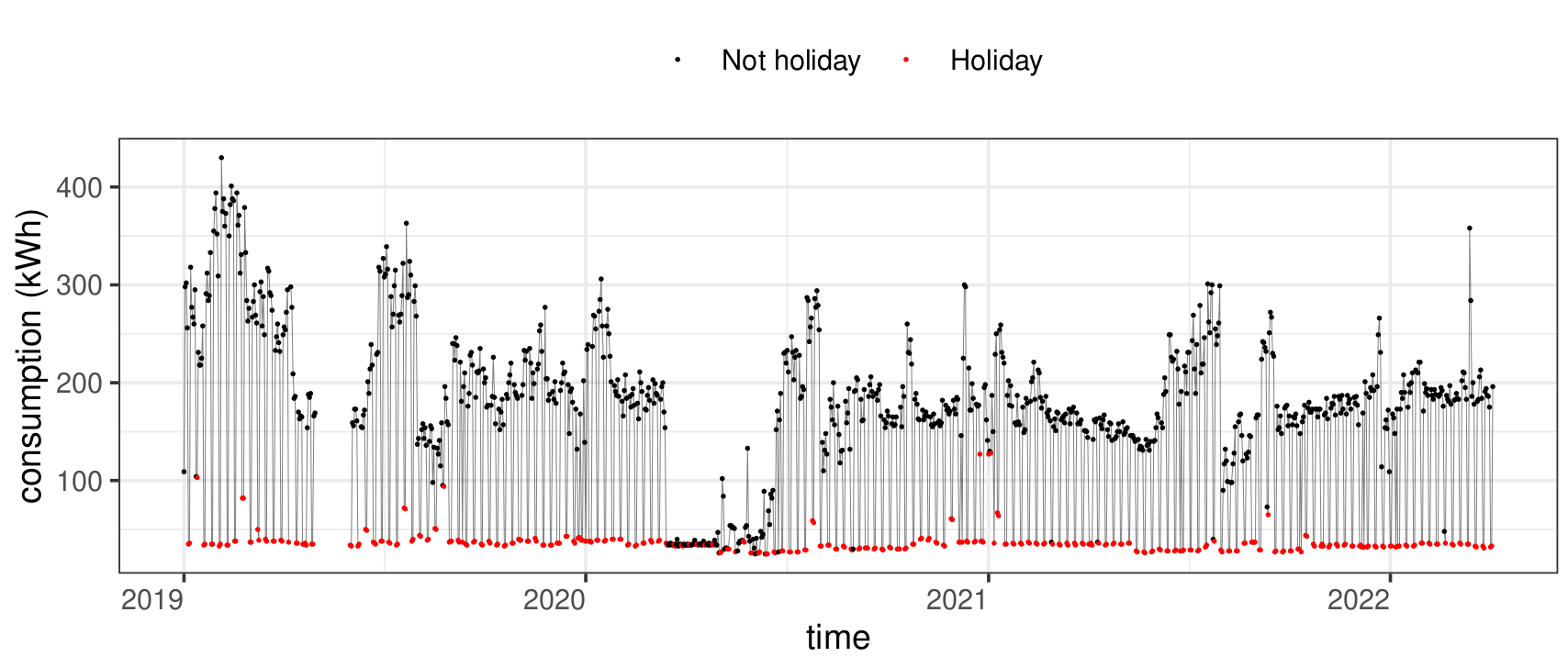
Detection of holiday periods
MindOpera: Data Orchestrator


2.1. What does it do?
Compares the energy performance of multiple buildings at a specific moment to identify inefficient or exemplary performance.
2.2. Data used:
-
Harmonized KPIs per building
-
Static data: use, surface area, climate
-
Typological classification of buildings
2.3. Objectives:
-
Identify best practices and critical buildings
-
Prioritize actions based on comparative performance
-
Generate benchmarks for new projects
-
Cross-sectional benchmarking
Identification and quantification of discrepancies between actual and historical energy consumption

Estimation of the balance temperature for heating and cooling periods
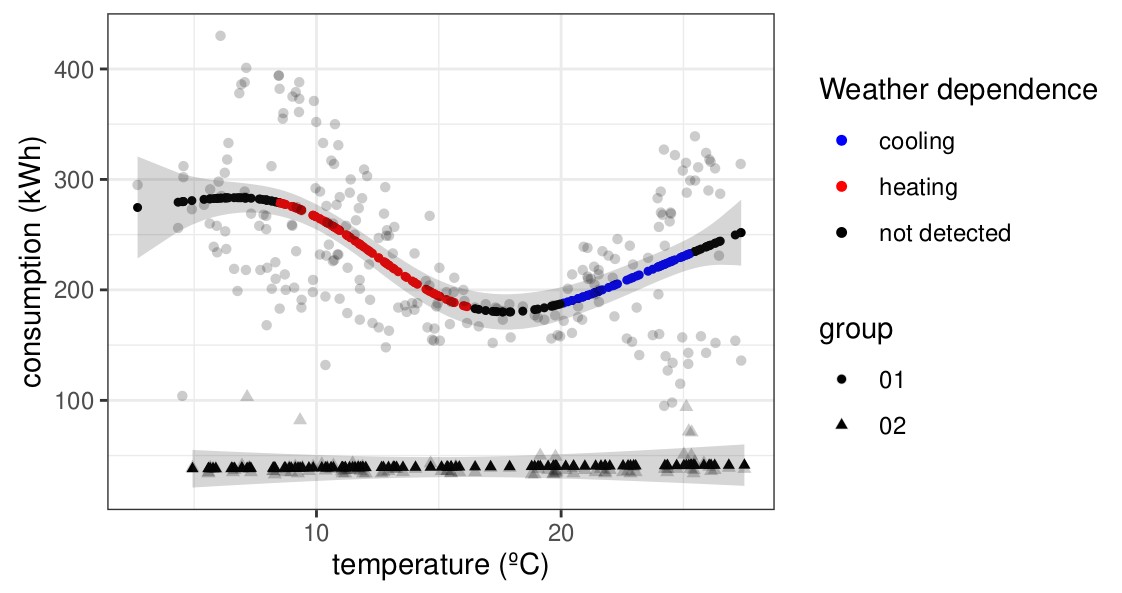
Applied model intelligence (2)
MindOpera: Data Orchestrator


3.1 What does it do?
Evaluates the effectiveness of improvement actions and detects anomalies or deviations in real time.
-
Assess the impact of retrofitting or improvement actions
-
Detect anomalies or deviations in energy performance in real time
-
Action evaluation and operational diagnosis model
3.2 Data used
-
Harmonized time series of energy consumption
-
Technical information from systems (SCADA, CMMS, IoT sensors)
-
Hourly climate data
-
Gas consumption
3.3 Objectives
-
Validate in real time the effectiveness of implemented improvement actions
-
Reduce downtime and operational costs
-
Generate predictive alerts and enable intelligent maintenance

Detailed prediction of efficiency based on the relationship between energy consumption and outdoor temperature
Applied model intelligence (2)
MindOpera: Data Orchestrator
Case studies: Aj.Barcelona







Climate Vulnerability Map of Barcelona









MindCity: Climate-Ready BCN
Aj. Barcelona, ECOSERVEIS
Source: ICLEI Action Fund 2.0
Budget: €1M
Objective: Support citizens and public authorities in adapting to extreme climate events and reducing energy poverty
Implemented: From May 2023 to June 2025






Its goal is to provide precise and up-to-date information for decision-making in urban planning, public policy, climate management, and the protection of the most vulnerable inhabitants.
Aj. Barcelona, ECOSERVEIS
Vulnerability map of Barcelona
-
Vulnerability estimation using AI and energy simulations
-
Export of a large set of socio-economic, energy, cadastral, and climate indicators (KPIs)


MindCity: Climate-Ready BCN
- The Climate Vulnerability Map of Barcelona is a geospatial analysis tool designed to identify the city’s most vulnerable buildings in the event of extreme heat-related events.
- It includes the assessment of all buildings (61,000) against heatwaves.
Main goal
Added value
CVI
How we estimate the Climate Vulnerability Index (CVI)
MindCity: Vulnerability map of Barcelona
Climate vulnerability is typically framed within three key dimensions defined in the IPCC's Third Assessment Report (Intergovernmental Panel on Climate Change) in 2001:
Exposure
Sensitivity
Adaptive capacity
Although most studies classify indicators using these three categories, our index introduces additional levels to provide a more nuanced analysis while remaining aligned with the traditional framework.




Climate variability and extreme events
- Track changes over time through indicators such as temperature, precipitation, and vegetation cover. Local data helps assess risks related to heatwaves, droughts, and floods.
Energy indicators
- Explore energy use patterns (gas and electricity consumption). Indoor temperature data is crucial for identifying households at risk during extreme heat events.
Building characteristics
- Assess features such as age, use, and size to understand their impact on energy use, indoor comfort, and structural vulnerability.
MindCity: Indicators groups (KPIs)
Vulnerability map
Infrastructure indicators
Assess the availability of essential public services (schools, climate shelters, social housing) and the strength of social networks to understand community support capacity.
Health indicators
Analyze the relationship between climate and health outcomes to identify vulnerable populations and prepare healthcare systems.
Demographic indicators
Not all groups are equally vulnerable. Analyzing factors such as gender, age, income, migration status, and unemployment allows for the development of more detailed CVIs.
Socioeconomic indicators
Understand urban resilience through factors such as housing costs, energy poverty, household debt, and gaps in social protection, which worsen during economic crises.


Vulnerability map
MindCity: Indicators groups (KPIs)


MindCity: Building CVI
-
Data preprocessing – Select input data to calculate the indicators.
-
Framework selection – Determine which indicators positively or negatively affect the CVI.
-
Granularity definition – Select the spatial scale.
-
Normalization & weighting – Harmonize indicators and assign weights.
-
Aggregation – Combine indicators into groups to obtain a final value.
⚠️ Challenge: Each study adapts its CVI to its specific context and priorities.
Climate Vulnerability Index (CIV)
Vulnerability map


Our approach includes interactive features:
-
View individual indicator layers.
-
Customize weights for tailored vulnerability analysis.
-
Adapt the CVI based on user goals (e.g., prioritizing climate vs. socioeconomic factors).
🎯 Outcome: Provide a practical tool for both policymakers and citizens to explore climate vulnerability and support decision-making.
MindCity: Building CVI
Vulnerability map


-
Local microclimate model
MindCity: Modelling
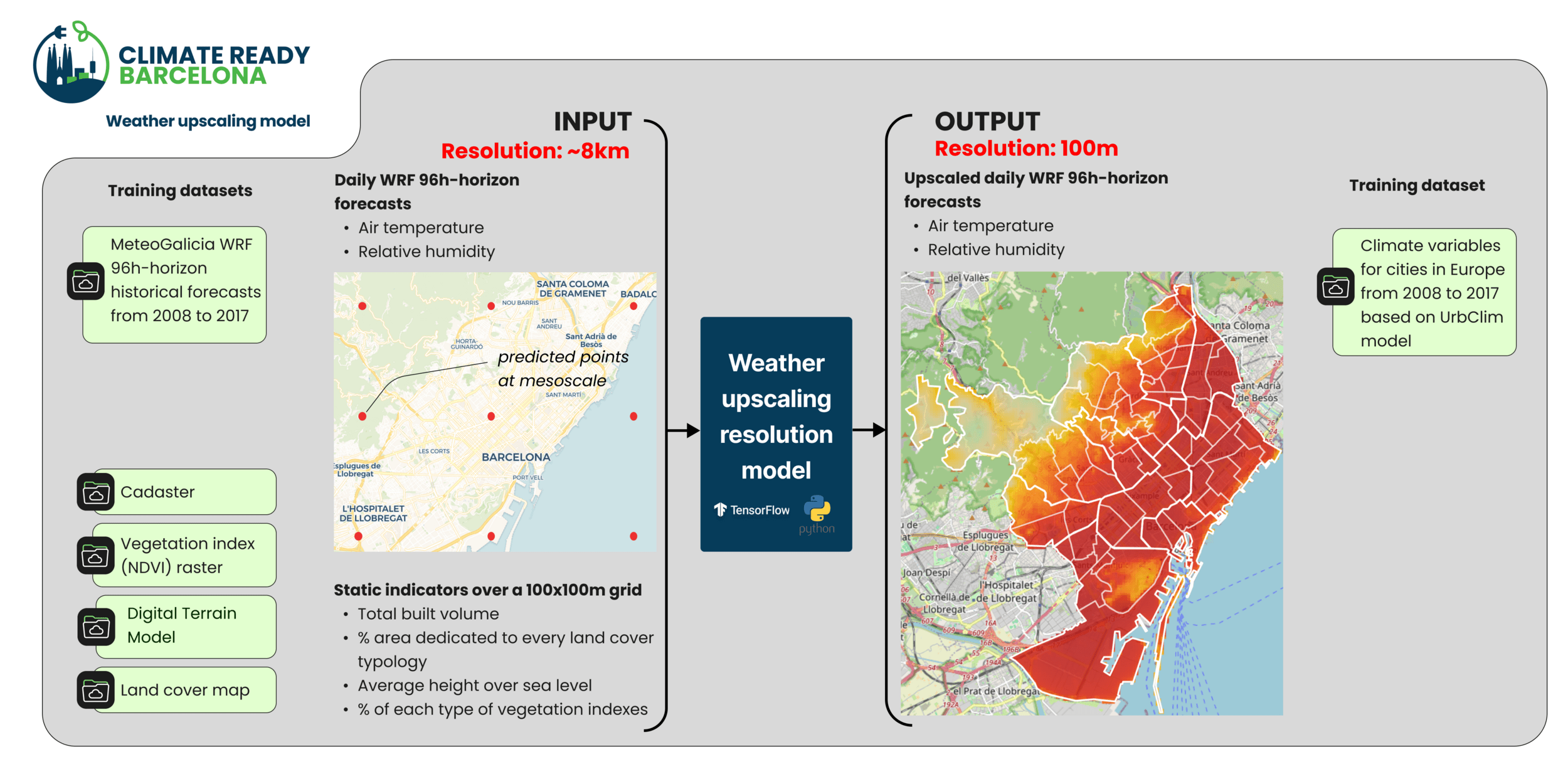
Vulnerability map


-
Thermal demand models
Simulation of cooling and heating demand based on a Resistor-Capacitor (RC) Model calibrated according to each building’s archetype. The model uses an electrical circuit to simplistically mimic the building’s thermal dynamics.
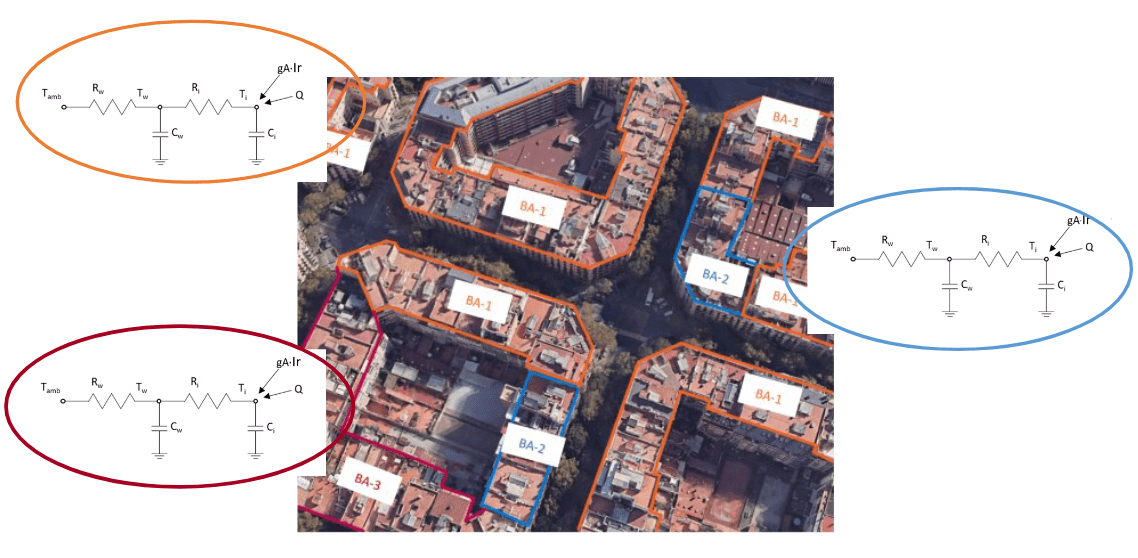
Vulnerability map
MindCity: Modelling


MindCity: Climate Vulnerability Map Visualization
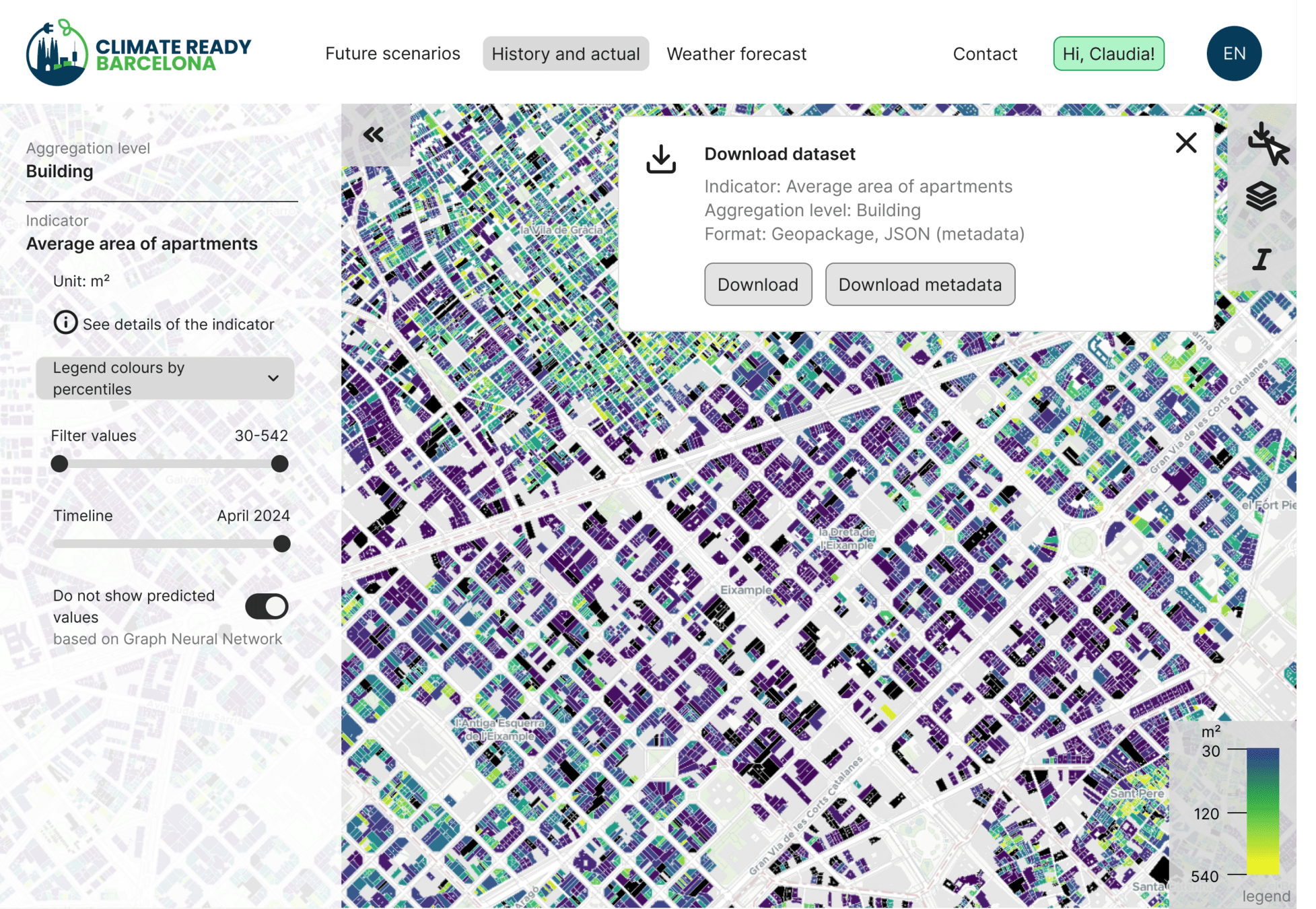
Export and data visualization
Text
Vulnerability map
Vulnerability map

Index evolution by streets and buildings


Queries and forecasts
Vulnerability map
MindCity: Climate Vulnerability Map Visualization



Queries and forecasts
Temperature forecast visualization by neighborhoods
Vulnerability map
MindCity: Climate Vulnerability Map Visualization


Thank you





Jordi Cipriano
Director of Innovation Unit BEE Group
cipriano@cimne.upc.edu
BEEGroup-PPT Master ENG
By CIMNE BEE Group
BEEGroup-PPT Master ENG
Explora el mapa de vulnerabilitat climàtica de Barcelona, que presenta perspectives d'experts i una plataforma de dades sòlida. Descobreix com s'avalua la vulnerabilitat i els conjunts de dades innovadors que informen aquesta anàlisi ambiental crucial.
- 117



